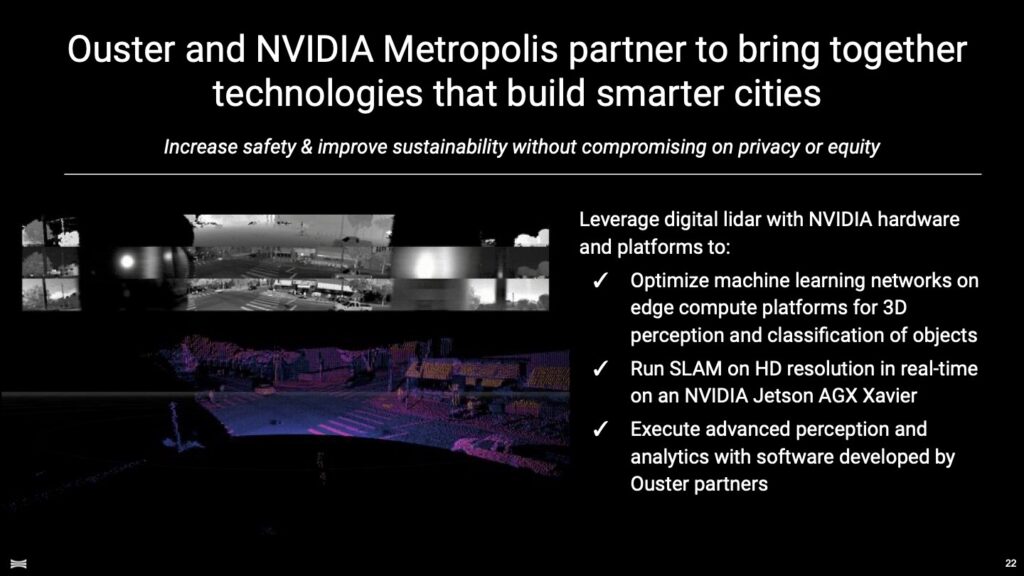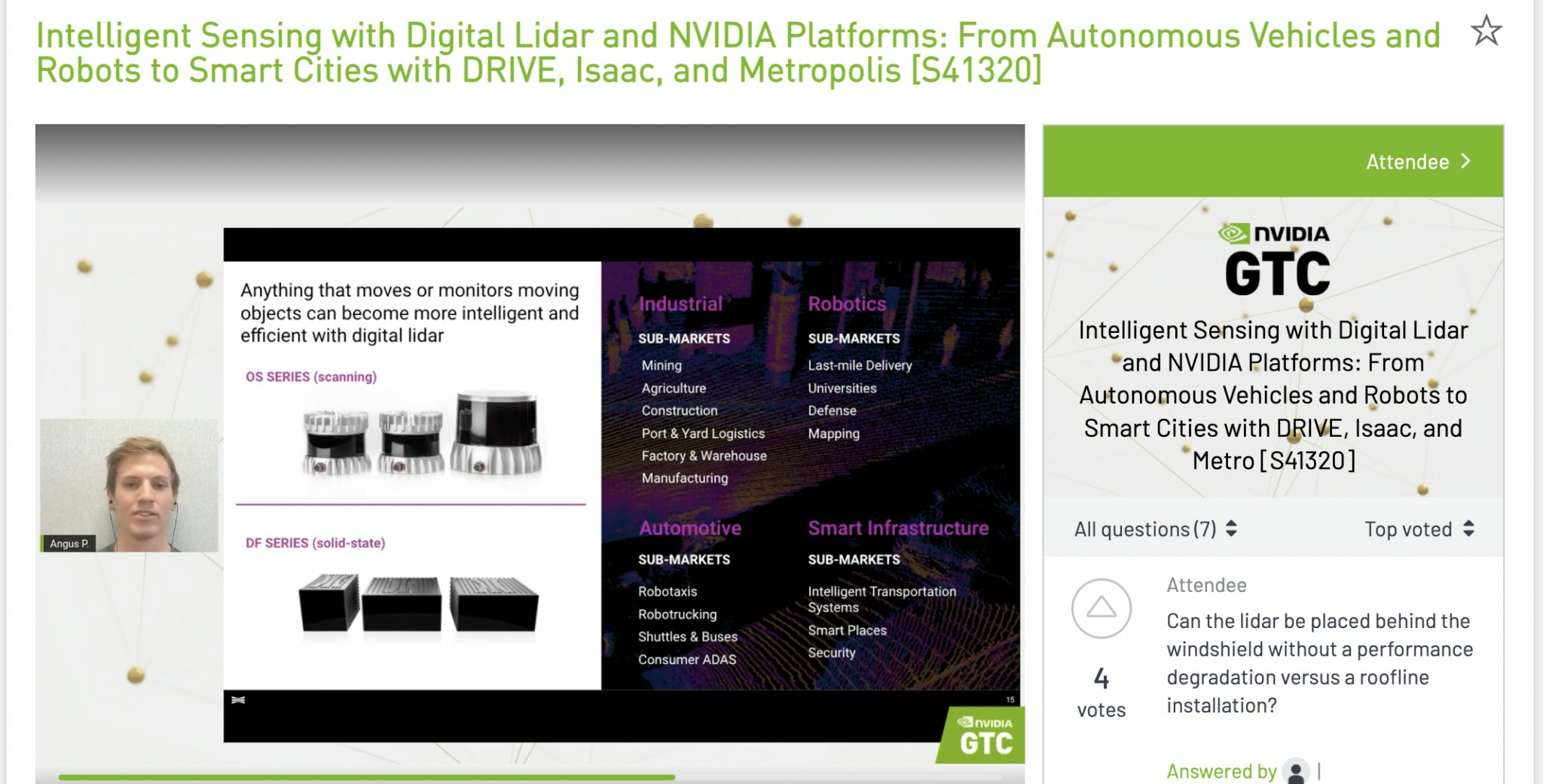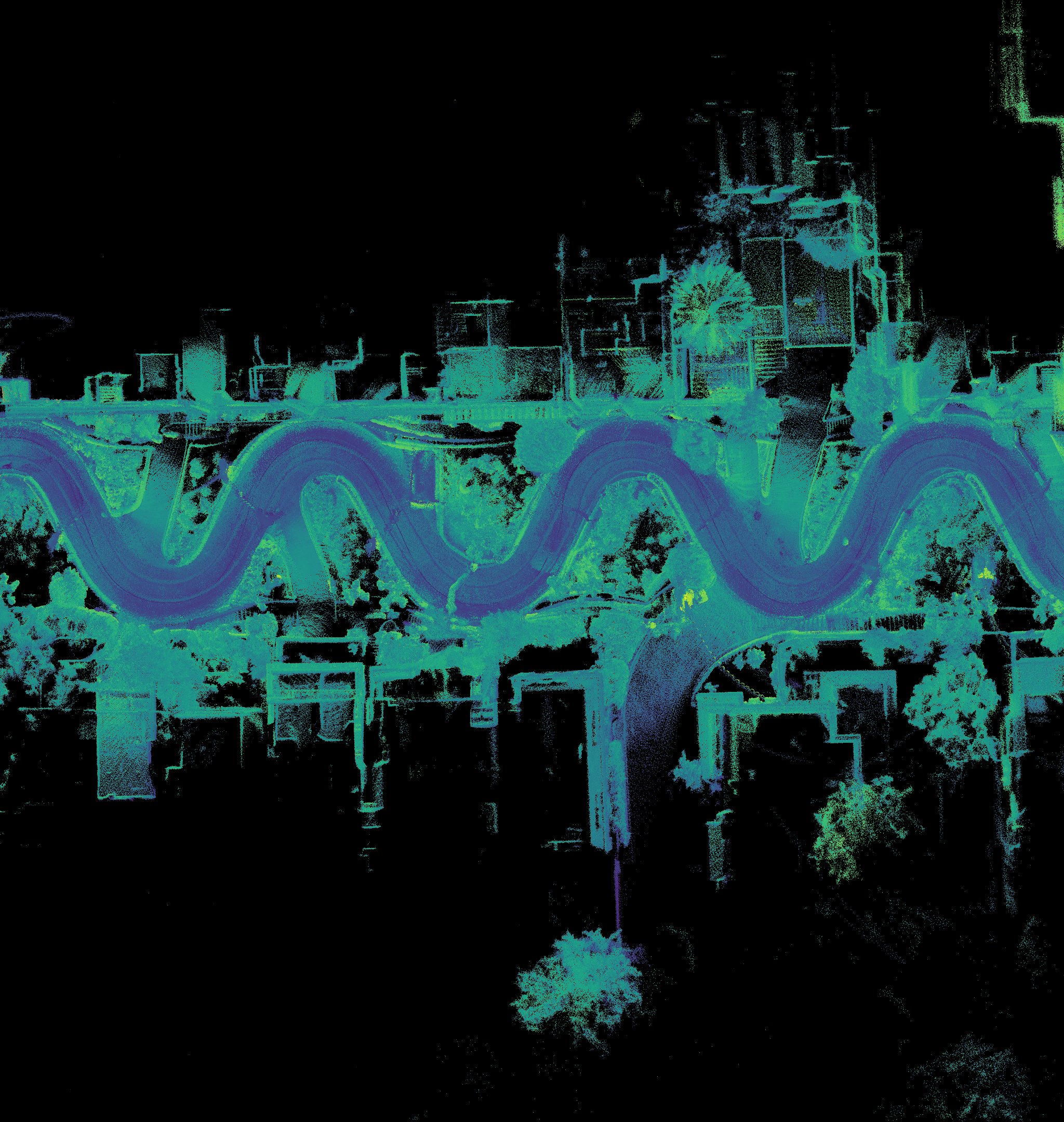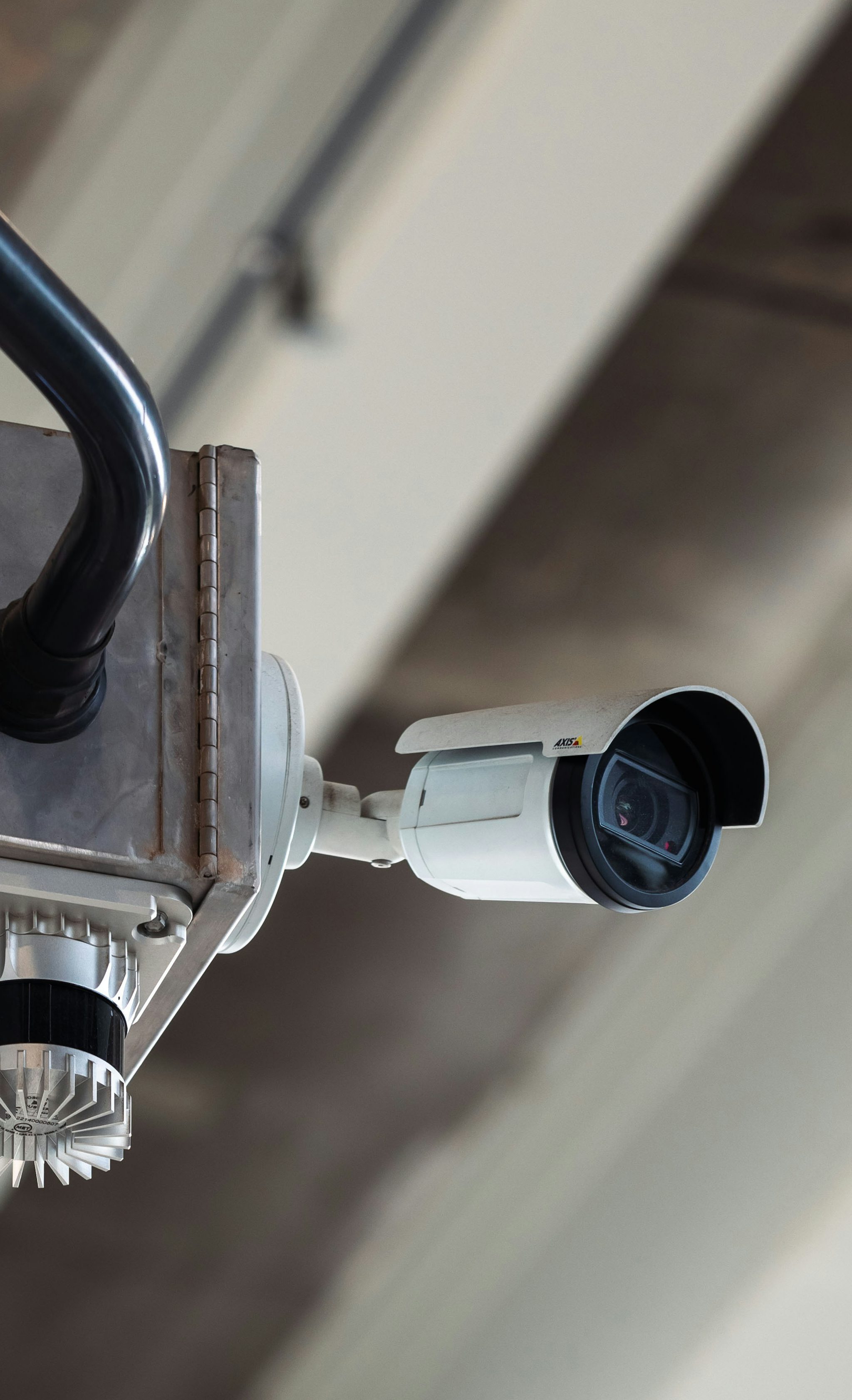ICYMI, Ouster CEO Angus Pacala spoke at the March 2022 NVIDIA GTC Conference.
In this post, we’ll breakdown Angus’ presentation on the three NVIDIA platforms that can be used with Ouster’s 3D digital lidar sensors: DRIVE, Issac, and Metropolis.
First things first. Anything that moves or monitors moving objects can become more intelligent and efficient with digital lidar.
If you’re developing autonomous vehicles (AVs), automating industrial applications, building robots, or engineering smart infrastructure solutions, then digital lidar should be a critical perception sensor in your system architecture.

NVIDIA platforms extend capabilities for developers by bridging hardware and software with frameworks, toolkits, and more to simplify hardware integration, sensor fusion, and data processing. All of this helps developers and companies bring applications to market faster.
NVIDIA DRIVE
Today, our OS series can be used with NVIDIA DRIVE to accelerate the development of autonomous vehicles. The NVIDIA DRIVE platform enables our customers to harness the power of Ouster lidar to maximize perception and localization algorithm performance.
“The Ouster OS2 is a solid solution that will augment [NVIDIA’s] long-range perception offerings thanks to its resolution and reliability.”
Gary Hicok, SVP of Automotive Hardware & Systems at NVIDIA

At the foundation of the NVIDIA DRIVE software stack is the DriveWorks SDK, which provides a simplified framework for AV perception stack development. Ouster is using NVIDIA DRIVE to further enable simple integration of our high-performance digital lidar into any autonomous vehicle platform through our dedicated NVIDIA DriveWorks plugin.
This compatibility significantly eases the development burden of bringing best-in-class 3D lidar perception to vehicle platforms, enabling safer transportation for everyone. For example, AV developers can use our structured ambient data to streamline vector processing and get camera/lidar fusion perception out of just one lidar sensor, all within NVIDIA’s simplified development framework.

A great example of a mutual customer using both Ouster’s digital lidar and NVIDIA DRIVE is autonomous trucking company, Plus.
Plus is using the NVIDIA DRIVE Xavier chip and DriveWorks SDK to process digital lidar data from hundreds of thousands of miles driven with their PlusDrive system. The PlusDrive system is actively deployed today on Amazon trucks in the U.S.
NVIDIA Isaac
NVIDIA’s efforts to deliver performant perception technologies to the ROS developer community has made it even easier to build industrial and robotics applications using Ouster digital lidar and the NVIDIA Isaac platform. For example, one of NVIDIA’s ROS updates improved performance for lidar point clouds and improved operation in environments like warehouses.


Serve Robotics is another mutual customer that demonstrates how Ouster comes together with NVIDIA. Serve’s sidewalk delivery robots use the NVIDIA Jetson edge AI and Isaac robotics platforms with an OS digital lidar sensor, which has helped Serve complete the first commercial Level 4 autonomous sidewalk delivery on the streets of Los Angeles earlier this year.
NVIDIA Metropolis
Ouster is also a part of the NVIDIA Metropolis partner program, which brings together technologies to build smarter, safer, and more sustainable cities. A number of cities in the U.S. and internationally are using OS sensors to detect vehicles, vulnerable road users, and traffic incidents in real-time. The data can then be analyzed or used with actionable software to improve safety and traffic congestion. Ouster lidar’s 3D spatial awareness and 24/7 performance combine the high-resolution imagery of cameras with the all-weather reliability of radar.

Today, we have over 40 software partners and system integrators, many of which use NVIDIA hardware to process lidar data, create real-time SLAM (simultaneous localization and mapping) models, and perform 3D perception and advanced classification for objects.

We worked with one of our software partners, Seoul Robotics, the city of Chattanooga, TN, and a local university to deploy digital lidar for pedestrian monitoring and near-miss detection on a high-traffic corridor. The high-compute data analysis is run on NVIDIA processors and is used by the city to improve traffic and pedestrian safety, as well as inform transportation infrastructure.
There are endless opportunities to work with Ouster digital lidar and NVIDIA platforms across the automotive, industrial, robotics, and smart infrastructure industries. The pace of lidar adoption is only accelerating and having the tools to develop systems capable of higher levels of intelligence and autonomy is paramount. Ouster plans to expand NVIDIA integrations with our OS sensors this year.
Feel like you missed out? It’s not too late to learn about what Ouster digital lidar and NVIDIA can do for your intelligent solutions. To catch the replay, register for free at www.nvidia.com/gtc/ and look up Angus’ session (S41320).



